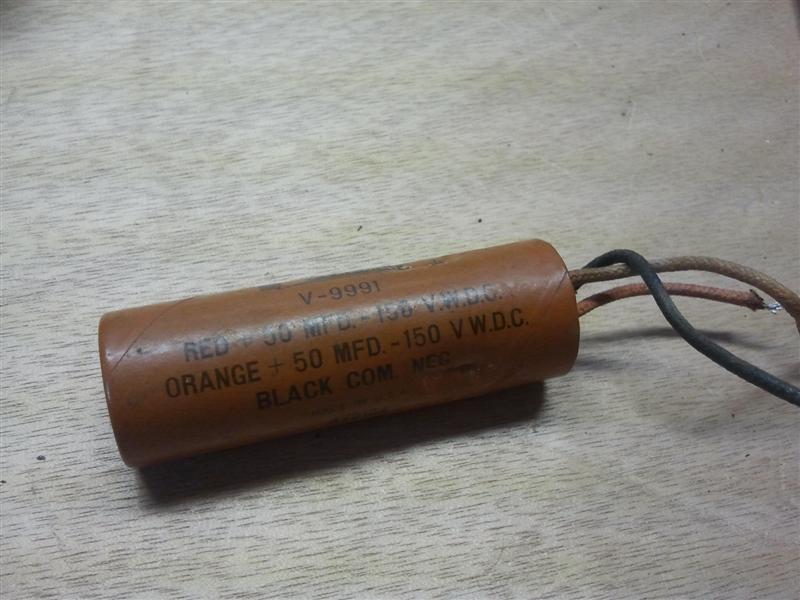Now, insert the whole new stack ‘o caps into the old shell. Take a moment to admire your work.
(no pics of the next 2 steps) Cut out a small piece of gray cardboard . The annoying fiberboard most things are shipped in or used as card material. Cut it down to the size of the inside of the cap shell. Poke 3 small holes for the leads. Feed the leads through the holes and press the fiber circle into the cap body, pushing it in about 1/2″.
Take your melting iron, and using a small candle(unlit) preferably white, but not a brilliant white, melt the bottom of the candle filling in the bottom of the cap body. This is simply for aesthetics, but what the heck. Don’t be lazy and burn the candle to drip. There is conductive carbon in the dripped wax.
